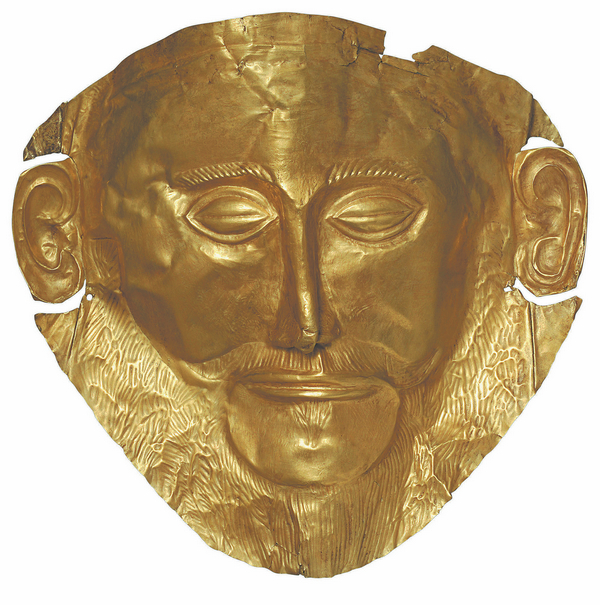

One of them was renowned German archaeologist Heinrich Schliemann, who was tempted to name a gold mask he unearthed from a burial ground in Mycenae in 1876 "The Mask of Agamemnon", after the legendary Mycenaean king who, in Homer's Iliad, commanded the Greek forces during the Trojan War. Mycenae is a prehistoric Greek city located in Peloponnese Peninsula and celebrated by Homer as "rich in gold".
The mask, found laid over the face of a dead person considered a member of Mycenaean royalty, dates to the 16th century BC and is believed to have nothing to do with Agamemnon, even if the man existed. Yet it has retained its glorious name nonetheless.
At the Nanjing Museum exhibition, a copy of the mask created by Swiss artist Emile Gillieron (1850-1924), who once acted as the Greek royal family's official painter, is on view, a reminder of the real-world splendor that fueled Homer's unfailing imagination.
"Meriones gave Odysseus a bow and quiver, and a sword, and on his head, he set a helmet made of hide, with many a tight-stretched thong within; without, the gleaming tusks of a white-tusked boar were set thick on this side and that …" wrote Homer in Book 10 of Iliad.
A helmet "made of hide" and covered with "the gleaming tusk of a white-tusked boar" — exactly as described by Homer — can be seen at the Nanjing Museum exhibition.
"The making of such a helmet required the hunting of approximately 50 wild boars, a fact that made the battle headgear a piece of luxury, as well as a showcase of bravery and strength," says Guan.